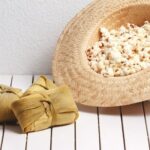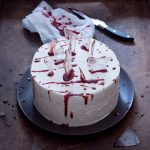Have you ever wondered what are cake decorations called? Cake decorations play a vital role in transforming a simple cake into a visually stunning and personalized masterpiece for any occasion. From birthdays to weddings, cake decorations add the finishing touch that reflects the theme and mood of the celebration. Whether it’s edible fondant flowers or non-edible plastic figurines, these decorative elements bring creativity and flair to every cake.
When it comes to cake decorating, there are various types of decorations that cater to different preferences and techniques. Edible decorations like fondant, gum paste, royal icing, and sugar flowers offer versatility in design and taste.
On the other hand, non-edible options such as plastic figurines, paper toppers, and fabric ribbons provide endless possibilities for customization. And for those who enjoy crafting their own unique decorations, handmade options like piping, sculpting, and painting with food coloring allow for a personal touch on every cake.
In this article, we will delve into the world of cake decorations to explore the various types available and how they can be used to elevate a simple cake into a work of art. From discussing popular edible decorations to providing expert tips on choosing the right elements for different occasions, we aim to provide valuable insights into the importance of cake decorations in making any celebration truly special.
So whether you’re a professional baker or an enthusiastic home cook, understanding the role of cake decorations is essential in creating memorable sweet treats for all to enjoy.
Types of Cake Decorations
Edible Cake Decorations
When it comes to edible cake decorations, there is a wide range of options to choose from. Fondant, for example, is a versatile and pliable icing that can be rolled out and draped over cakes to give a smooth, professional look. It can also be molded into various shapes and figures, making it perfect for creating intricate designs.
Gum paste is another popular choice for creating edible cake decorations. It dries hard and allows for delicate flowers and other detailed decorations to be made in advance.
Royal icing is commonly used for piping intricate designs like lace, borders, and lettering onto cakes. This type of icing hardens when dry, providing a sturdy base for decorative elements. Sugar flowers are also a favorite among bakers, as they add an elegant touch to any cake. These delicate blossoms are crafted by hand using flower cutters, molds, and special tools.
Non-Edible Cake Decorations
Non-edible cake decorations offer a wider variety of options that can add flair to any cake design. Plastic figurines come in various themes such as cartoon characters or animals, making them ideal for children’s birthday cakes. Paper toppers are another non-edible option that allows for customizing cakes with personalized messages or images printed on edible paper using food-grade ink.
Fabric ribbons are also popular non-edible decorations that add a touch of elegance to wedding cakes or other formal occasions. They come in different colors and patterns that can complement the overall theme of the event.
Handmade vs. Pre-Made Cake Decorations
In addition to edible and non-edible categories, cake decorations can also be classified as handmade or pre-made. Handmade decorations involve techniques such as piping buttercream or royal icing onto the cake, sculpting fondant or gum paste into unique shapes and characters, and painting with food coloring directly onto the surface of the cake.
On the other hand, pre-made decorations include ready-to-use fondant toppers that come in various designs such as flowers, hearts, or stars. Edible markers allow for detailed drawings on fondant or royal icing surfaces without having to mix different colors of frosting. While both handmade and pre-made decorations have their advantages, choosing between them ultimately depends on the specific design needs for each cake project.
Edible Cake Decorations
When it comes to cake decorations, one of the most popular choices is edible decorations. These types of decorations not only add visual appeal to a cake but also enhance its flavor and texture. Edible cake decorations are often used to create intricate designs and personalized touches for various special occasions. Here are some popular edible cake decorations and their uses:
1. Fondant: Fondant is a versatile type of icing that can be rolled out and draped over a cake to create a smooth, flawless finish. It can also be used to create 3D figures, flowers, and other detailed designs. Fondant can be colored and flavored according to preference, making it a favorite choice for professional bakers.
2. Gum Paste: Gum paste is another popular choice for creating intricate cake decorations such as delicate flowers, leaves, and figurines. Its pliability allows for shaping and molding into various forms that can dry into hard pieces suitable for adorning cakes.
3. Royal Icing: Royal icing is a smooth and glossy type of icing that hardens when dried, making it perfect for creating intricate designs like lace patterns, piped borders, and delicate details on cakes. This versatile medium can be used as an adhesive for attaching other edible decorations as well.
4. Sugar Flowers: Sugar flowers are delicate handmade decorations crafted from gum paste or fondant. These realistic-looking floral embellishments are often used to adorn wedding cakes, birthday cakes, and other special occasion cakes.
In terms of application techniques for these edible decorations, bakers use tools like rolling pins, cutters, sculpting tools, paintbrushes for adding color details with food coloring or edible dusts onto the pieces they create.
Overall, these popular edible cake decorations offer versatility in design possibilities while providing an added element of taste and texture to the finished product.
Non-Edible Cake Decorations
Plastic Figurines
Plastic figurines are a popular choice for cake decorations, especially for children’s birthday cakes. These figurines come in a variety of themes, such as superheroes, princesses, animals, and cartoon characters. When using plastic figurines as cake decorations, it is essential to ensure that they are clean and food-safe. Ideally, these should be placed on the cake just before serving to prevent any potential paint or plastic from coming into contact with the cake.
Paper Toppers
Paper toppers are versatile and lightweight cake decorations that come in an array of designs, including flags, banners, and cut-out shapes. They are ideal for adding a personalized touch to celebration cakes for birthdays, weddings, and other special occasions. To incorporate paper toppers into cake designs effectively, it is crucial to place them on the cake just before serving to prevent them from becoming soggy or losing their shape due to exposure to moisture from the frosting.
Fabric Ribbons
Fabric ribbons can add an elegant and sophisticated touch to cake designs for events like weddings and anniversaries. These non-edible cake decorations are available in various colors, patterns, and textures.
When using fabric ribbons on cakes, it is important to make sure they are made from food-safe materials and do not have any embellishments like beads or metallic accents that could pose a choking hazard. Additionally, fabric ribbons should be removed from the cake before serving as they are not meant to be ingested.
Incorporating non-edible cake decorations requires careful consideration of safety and aesthetics. Whether using plastic figurines, paper toppers or fabric ribbons, it is essential to choose decorations that complement the theme of the cake while being mindful of potential hazards such as choking or contamination. By following best practices for incorporating non-edible decorations into cake designs, bakers can ensure that their creations are visually appealing and safe for consumption during celebratory moments.
Handmade Cake Decorations
When it comes to creating personalized and special cakes, handmade decorations can add a unique touch and showcase the skills of the baker. Whether it’s a birthday, wedding, or any other special occasion, handmade cake decorations can elevate the look of the cake and make it truly one-of-a-kind. Below is a guide on creating homemade cake decorations using techniques like piping, sculpting, and painting with food coloring.
- Piping: Piping is a popular technique for creating intricate designs on cakes using buttercream or royal icing. With the use of piping bags and various tips, bakers can create beautiful patterns, flowers, borders, and even inscriptions on cakes. Some common piping tips include round tips for outlining and writing, star tips for creating rosettes and borders, and petal tips for making realistic floral designs.
- Sculpting: Sculpting edible figures or objects out of fondant or gum paste requires some skill but can result in stunning cake toppers. From simple shapes like hearts and stars to elaborate figurines of people or animals, sculpting allows for endless creativity in cake decorating. It’s important to have the right tools such as sculpting tools, shaping molds, and edible color dusts to bring these creations to life.
- Painting with Food Coloring: Using food coloring to paint details on fondant or gum paste decorations can add depth and dimension to cake designs. From hand-painting delicate floral patterns to adding metallic accents or shading to figurines, food coloring opens up endless possibilities for customizing cake decorations. It’s essential to use food-safe brushes, gel-based food colors for vibrant hues, and practice on small pieces before working on larger cake elements.
With these techniques in mind, bakers can create stunning handmade cake decorations that not only look visually appealing but also add a personal touch to any celebration. The time and effort put into crafting these decorations truly make them stand out as unique works of art on a cake.
Pre-Made Cake Decorations
When it comes to cake decorations, pre-made options are a convenient and time-saving choice for both amateur and professional bakers. These ready-to-use decorations are easily available in the market and come in a variety of designs, colors, and themes to suit different occasions and cake styles. Pre-made cake decorations include items such as fondant toppers, sprinkles, edible markers, and more.
One popular pre-made cake decoration is the fondant topper. Fondant is a versatile type of icing that can be rolled out and shaped into various designs like flowers, shapes, or characters. Ready-to-use fondant toppers save time as they come already designed and created, making them perfect for those looking for a quick yet professional finish on their cakes.
Another pre-made decoration essential is sprinkles. Sprinkles come in different shapes, sizes, and colors, adding a fun and festive touch to cakes. They are versatile enough to complement almost any type of cake design, from children’s birthday cakes to elegant wedding cakes.
Edible markers are also gaining popularity in the world of cake decorating. These markers allow decorators to draw or write directly onto the surface of the cake or fondant with edible ink. This opens up opportunities for personalized messages or intricate designs on cakes.
| Pre-Made Cake Decoration | Details |
|---|---|
| Fondant Toppers | Ready-to-use decorative elements made from fondant that can be placed on top of cakes. |
| Sprinkles | Small pieces of colorful confections used as decoration or topping for cakes. |
| Edible Markers | Pens filled with edible ink that allow decorators to draw or write on cakes. |
Professional Tips for Cake Decorating
Cake decorating is an art form that requires attention to detail and creativity. When it comes to choosing the right decorations for different types of cakes, it’s essential to consider the theme of the occasion, the flavor of the cake, and the overall aesthetic you want to achieve.
For example, for a whimsical and playful birthday cake, you may opt for colorful fondant shapes or edible glitter, while a sophisticated wedding cake may call for delicate sugar flowers or intricate piping designs.
Color coordination is another crucial aspect of cake decorating. Whether you’re using edible or non-edible decorations, it’s important to ensure that they complement the color palette of the cake.
A harmonious color scheme can elevate the visual impact of the cake and tie together the overall design. For instance, if you’re decorating a red velvet cake, consider using cream cheese frosting in a complementary shade like ivory or pale pink, and adorn it with dark chocolate shavings or raspberries for contrast.
Achieving a polished look for special occasions involves meticulous attention to detail and precision in applying decorations. If you’re working with fondant or gum paste decorations, practice proper handling techniques to avoid any cracks or tears in your designs. It’s also essential to use tools like offset spatulas and bench scrapers for smooth frosting application and clean lines. Additionally, experimenting with different textures and shapes can add depth and visual interest to your cake decorations.
| Expert Tip | Description |
|---|---|
| Consider the theme of the occasion | Choosing decorations that align with the theme can create a cohesive and impactful design. |
| Harmonious color scheme | Coordinating colors between decorations and frosting can enhance the overall aesthetic of the cake. |
| Precision in application | Paying attention to details such as smooth frosting application and proper handling can contribute to a polished look. |
Conclusion
In conclusion, it is evident that cake decorations play a crucial role in elevating the visual appeal and personalization of a cake for any occasion. Whether it’s edible or non-edible, homemade or pre-made, the right decorations can take a simple cake to the next level, making it a centerpiece of any celebration.
From fondant and gum paste to plastic figurines and fabric ribbons, the options for cake decorations are endless, allowing for creativity and customization based on individual preferences and themes.
Looking ahead, the future of cake decorating holds exciting potential for innovation and creativity. With advancements in technology and an increasing demand for personalized cakes, the industry continues to evolve with new materials, techniques, and designs. As consumers seek unique and Instagram-worthy cakes, professional cake decorators will need to stay updated with emerging trends in order to meet their clients’ expectations.
As the world of cake decorating continues to expand and evolve, one thing remains constant – the importance of cake decorations in creating memorable experiences through visually stunning and personalized confections. So whether it’s a birthday celebration or a wedding reception, there’s no doubt that the right decorations will continue to be an essential element in making every occasion extra special.

Welcome to my blog about home and family. This blog is a place where I will share my thoughts, ideas, and experiences related to these important topics. I am a stay-at-home mom with two young children. I hope you enjoy reading it! and may find some helpful tips and ideas that will make your home and family life even better!





